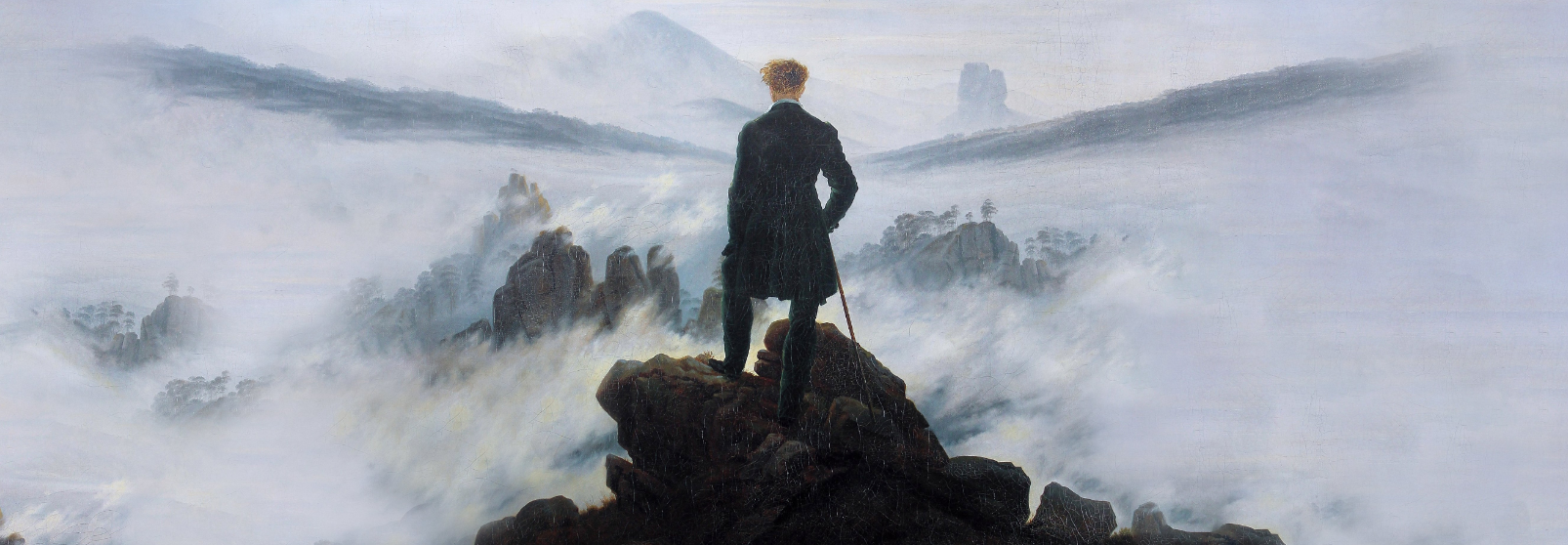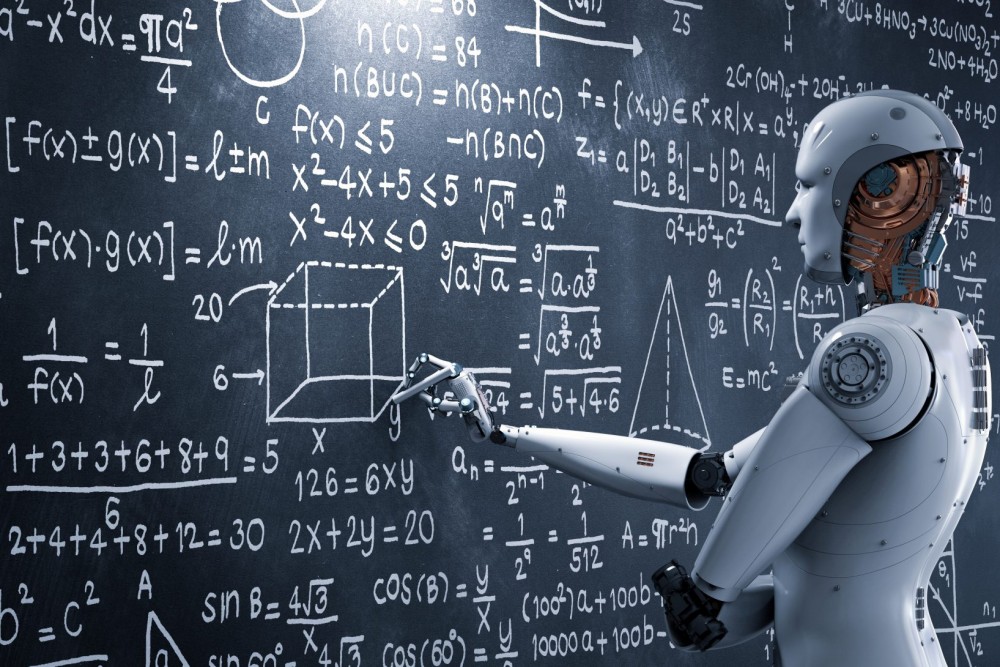For 4,000 years we have been fading into the background of existence. There was a time we thought our local world to be so privileged as we boasted ourselves the center of the universe. But soon the earth was round, we revolved around the Sun and not the other way around, and the whole planet was just one speck of dust drifting through the cloudy Milky Way. Our big egos were crushed with every discovery.
The final blow came when the Hubble telescope discovered that even our galaxy was not unique; billions more just like it are hiding in every seemingly empty patch of sky.
But the result of one experiment would bring us back into the forefront of existence; making mankind the crucible of reality itself.
It is absolutely the most profound scientific discovery of the modern age and most people have never heard of it.
Perhaps its implications are too disruptive; reaching out beyond the realm of science and into much murkier waters. Science itself may have ran away from its findings towards a world of more concrete facts and tangible ideas. But if science is to seek truth, then it has found one of the strangest truths of all time.
Throughout human history we have found ourselves to be smaller and smaller in our expanding universe. But now were back…
The journey of this discovery began with a simple question. Is light a wave or a particle? Any 1st year physics student could tell you about the “duality of light.” This is a well known phenomenon that describes how light can act either as a wave or a particle, depending on circumstances.
This is one of those ideas most students just accept as fact without much thought, frankly because their teachers demand it and so does the mathematics.
“We have two contradictory pictures of reality; separately neither of them fully explains the phenomena of light, but together they do.” – Albert Einstein
The experiment that would address this contradiction was actually a series of experiments branching off from the famous “double-slit experiment” of 1801 performed by Thomas Young. His parent to all the following experiments had a very simple design.
The Simple Design:
- Shine a light through two cut out slits on a plate and observe the pattern on the screen behind.
- If the screen shows a pattern of 2 lines, then the light is acting as a particle.
- If the screen shows a interference pattern, then the light is acting as a wave.
Back in 1801, the screen showed an interference pattern and so Thomas Young concluded that light acted as a wave. He would later be proved to be only half right.
Why do waves form a interference pattern when passed through two slits?
Here is a animation to explain:

As a wave passes through the slits, it becomes two separate waves that interfere with each other to form this barred pattern.
Before this experiment, the common understanding of light was that it was a particle. This was an idea made popular by Isaac Newton himself, who used the particle model of light to describe many aspects of its behavior.
Thus, when the result was announced, most scientist argued that it was simply the product of multiple photons of light interfering with each other to form the pattern. Much like how waves in the ocean are formed out of multiple particles of water.
This was a promising explanation of the phenomenon until we had the technology to shoot only one photon of light at a time and the same interference pattern persisted.
But how is this happening? If light is a particle, then how could it create an interference pattern while only shooting one particle at a time? We should be seeing the 2 parallel line pattern. There is no way that the particle could be going through both holes at once and interfering with itself is there?
Now hold on to your seats because this is where the experiment takes a insane turn.
Scientists decided to put a sensor next to the two slits on the plate to spy on the photon as it passes through. And what they found was astonishing.
- When they observed which hole the photon was traveling through with the sensor, the pattern changed to the 2 parallel lines: exactly the result you would expect if the light was acting as a particle.
- And when they turned the sensor off, the pattern went back to the wave-like interference pattern.
- They double and triple checked…the results persisted.
This same result was seen when using larger particles of matter like electrons. And so, the experiment spread from being simply about the nature of light, to the nature of matter itself. And the “duality” became known as a characteristic of all matter.
These results hinted that the mere presence of a conscious observer was causing the change in behavior. This would be an unprecedented result.
Never before in the history of mankind has there been any proof that the world is simply there because we observe it.
Albert Einstein once asked Neils Bohr in a heated debate about reality,
“Do you really think the moon isn’t there if you aren’t looking at it?”
Neils Bohr, now known as the father of Quantum Physics, sarcastically rebuked him saying,
“Einstein, don’t tell God what to do.”
But there was still room for some sort of physical interaction to cause this type of pattern shift. We could not definitively say consciousness alone was causing the change just yet.
Here is the problem:
In order to observe which hole our photon is going through, scientists have to basically bump it with another photon. This is what physicists refer to as the “measurement problem.” Which is basically the fact that in order to measure something, you have to interact with it.
Normally, this does not matter because we interact with large objects and colliding a few photons into them barely makes a difference. However, on the scale of elementary particles; a single photons interaction could cause huge amounts of change.
But there is a way around the measurement problem.
In 1999, Dr. Kim designed an experiment that will forever change our understanding of the universe.
The Delayed Choice Quantum Eraser experiment:
- A machine will randomly shoot one photon at a time through one of the two slits.
- Once passing through, a device will split the photon into a pair of “entangled photons.”
- “Entangled” simply means that the photons’ states are linked. Even across distances, what is observed of one will affect the other. They are essentially the same particle.
- One of these pairs of photons will shoot to a detector that can be reached from either of the two initial slits. (Let’s call this path, “the control path,” the top path in the diagram)
- The other photon of the pair will shoot towards an apparatus of mirrors that gives a 50/50 chance of sending the photon down a path that gives us knowledge of which slit it originally went through, or to another path which gives us no information.
Whenever the paired photon was sent down a path that gave us information about the slit it went through, it showed two parallel lines. And when it took a path that could have been reached by either slit, it displayed a interference pattern.
This experiment takes out any form of interaction with the photons. The only difference between the paths is the knowledge we can gain from them.
But even more shocking is that the pattern seen at the “control path” always matched the pattern seen by its entangled pair even though the choice to observe the photon was made after its pair had already reached the control detector! Meaning that the decision to observe which path the photon took changed the results of the “control photon’s pattern” that occurred in the past!
This is why the experiment is referred to as a “delayed choice.”
With this experiment we find the same mind boggling results as those before but with the absolute certainty that it is solely the power of conscious observation that causes the photon to change its behavior and a understanding that this observation can even change events that occurred in the past.
One can imagine running this same experiment with light drawn from a distant star. Our decision to observe which path the light took could then effect the photon millions of years in the past!
What exactly is happening here?…
Well scientists are still not exactly sure but their best guess is that particles exist as waves (or probabilities) until they are directly observed. At the point of observation, the “wave of probabilities” collapses into one tangible outcome. Essentially, the world is just a realm of probabilities until a conscious observer causes one of the possibilities to occur.
What does this mean?
It could be that there are constantly parallel universes branching off of each other and our choice to “observe” is what causes us to follow down the path of one of those universes. This is referred to as the Copenhagen Interpretation or Everett’s many world theory of the universe. Quite possibly, there are an infinite amount of near copies of you in parallel universes that simply made a few decisions differently. It is our choices that determine which of these universes we live in and perhaps without conscious beings to chose, the universe would simply be a ream of possibilities instead of concrete results. Then again, perhaps the universe IS a ream of endless possibilities and it is only because our physical minds are limited to one “cause and effect” that we are trapped in only one timeline.
Either way, there is a paradigm shift waiting in the shadows; a shift from a world based on things, to a world based on consciousness. This may sound hokey or like science fiction but the facts of science tell us it is true. There is still much for us to learn about our world, and no aspect of it more than consciousness. After millennia of looking up, we are still most baffled by looking in.








[…] described in our article, The Experiment That Changed Everything, a human observer has been proven to cause matter itself to change its characteristics and turn […]